It took more than stealth to make the F-117 Nighthawk a combat legend
- By Alex Hollings
Share This Article
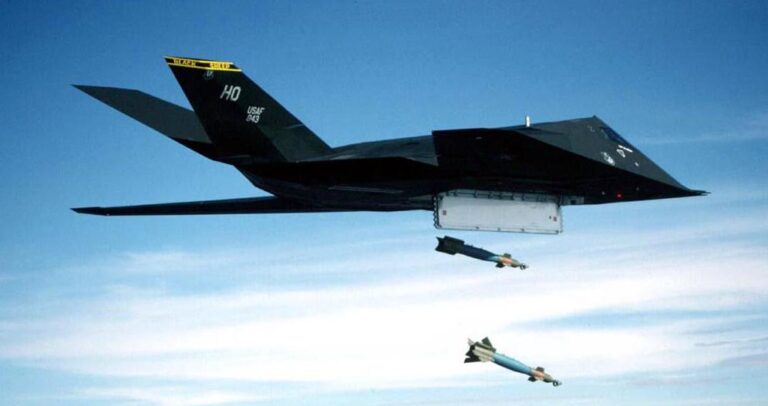
America’s F-117 Nighthawk, the world’s first operational stealth aircraft, has had a very busy retirement. Images and videos of Nighthawks taking to the sky might even be more common today than they were at the height of the jet’s operational lifespan, with the Air Force’s retired F-117s, also known as Black Jets, now playing the roles of adversary stealth fighters and even low-observable cruise missiles for a wide variety of air combat exercises.
These are logical uses for the roughly 45 F-117s said to be held in what the Air Force calls “Type 1000 Flyable Storage,” an official term to describe storing the aircraft in near-flyable condition just in case the United States has a pressing need to get them back into the fight.
With a radar cross-section that’s been reported to be as small as just .025 square meters, the Nighthawk is likely still more difficult to detect on radar than either China’s Chengdu J-20 or Russia’s Sukhoi Su-57 stealth fighters, making the aircraft a perfectly suited test-target for advancing counter-stealth technologies.
But while the F-117’s claim to fame may be introducing the world to stealth, it wasn’t stealth alone that made the Nighthawk so formidable. Entering service only about a decade after America’s last carpet-bombing campaigns over Vietnam, the F-117’s ability to deliver precision-guided ordnance to targets identified via an onboard laser designator with pinpoint accuracy was perhaps equally revolutionary. Stealth made the Nighthawk nearly invisible to enemy detection, but it was the laser-guided accuracy of its weapon systems that made it an unparalleled airborne sniper.
A pivot point in aviation history

Throughout aviation history, there are a handful of platforms that stand out as pivot points in aircraft design and use: The Wright Flyer introduced the world to powered flight; the Messerschmitt Me 262 propelled aviation into the jet age; and the General Dynamics F-16 Fighting Falcon’s fly-by-wire controls helped turn air-to-air combat into a quantifiable science. But few – if any – aircraft in history represent as dramatic a shift in the direction and employment of aviation technology as Lockheed’s legendary F-117 Nighthawk.
In a time when the most advanced tactical aircraft in the world would light up adversary radar screens like a Greyhound bus, Ben Rich, the director of Lockheed’s Skunk Works and head of the F-117 program, famously walked into the offices of senior Pentagon officials and rolled a single marble across their desks.
“Here’s the observability of your airplane on radar,” he said of Lockheed’s aircraft. The concept, while seemingly outlandish, was so promising that Rich received a contract to begin engineering on the Nighthawk in November 1977, a full month before Lockheed’s stealth technology demonstrator, Have Blue, would even prove the concept could fly.
Just six years later, on October 28, 1983, Rich’s Skunk Works secretly delivered the 14th production F-117 Nighthawk to the Air Force’s clandestine 4450th Tactical Group out of the Tonopah Test Range in Nevada. With more than a dozen operational aircraft now on hand, the delivery also marked the jet’s entrance into initial operating capability. In a chorus of hushed tones and redacted documents, Ben Rich, Lockheed’s Skunk Works, and the U.S. Air Force had changed the focus and direction of military aerospace for decades – maybe even a century – to come… and only a handful of people in the world even knew it.
Related: Incredible true stories of Area 51: Hiding America’s air power secrets
The 4450th was established just a few years prior for the sole purpose of turning America’s newest piece of aviation technology into an operational weapons platform, though as far as the public – and even many of the military personnel assigned to the unit at first – were told, they’d be doing little more than testing avionics for the A-7D Corsair II.
But on November 10, 1988, Uncle Sam finally let the cat out of the bag – acknowledging the existence and the designation of the F-117 Nighthawk, even if the public wouldn’t get its first good look at the aircraft for another two years to come.
In fact, the Nighthawk would see combat before a crowd. On December 19, 1989, Nighthawks departed Tonopah and were joined by tanker aircraft that accompanied them through seven in-flight refuelings over eight hours, as the stealth jets covered more than 3,000 miles to their targets in Panama as a part of Operation Just Cause. Flight leader Greg Feest would later recall dropping a 2,000-pound laser-guided GBU-27 bomb on an open field close to Panamian military barracks with the intent of disorienting defensive forces. Within minutes of the bomb-making landfall, American special operations troops were parachuting down into its crater to begin their hunt for General Manuel Noriega.
It was the start of a historically successful combat career.
The F-117’s precision emerges from the shadows of Iraq

Two years later, in the early morning hours of January 17, 1991, the job of leading a formation of 10 F-117 Nighthawks into the most heavily defended airspace on the planet – Baghdad, Iraq – would once again fall to Major Greg Feest. Just before 3:00 AM local time, Feest peered at the infrared image on his Multi-function display (MFD) and carefully compared it to intelligence photographs he kept on the board strapped to his leg. Confident that he’d found his target, Feest used the fingertip target designator (TD) to bring the crosshairs over the center of the bunker.
As Feest released the target designator button, it gave the command for an invisible laser to burst out from behind a radar-absorbent screen on the underside of the Nighthawk’s nose, illuminating the path for his 2,000-pound bomb to follow to its target. As Feest would later recount, Iraqi forces didn’t fire a single shot in his direction until the bomb hit, and then they were firing frantically in every direction. They had no idea where he and his Black Jet were.
The Nighthawk’s unique and invaluable laser targeting capabilities were put on full display for the public three days later in a press conference held by coalition commander General Norman Schwarzkopf. The General pulled up the downward-looking infrared camera footage from an F-117 tasked with striking a hardened storage facility housing SCUD ballistic missiles. The pilot, whose name was not disclosed, placed his target designator in the center of a one-meter-wide air vent on the roof.
And with the push of a red button on the top of his stick, the pilot was able to thread the needle perfectly, lobbing the 2,000-pound bomb straight through the open vent, obliterating the entire facility in one fell swoop.
Related: How the Army’s Delta Force and Night Stalkers teamed up to rescue hostages in Iraq

Throughout the Desert Storm air campaign, Nighthawks flew just two percent of the total coalition combat sorties, but reportedly accounted for nearly 40 percent of all strategic targets hit. Two months after the air campaign concluded, the U.S. Air Force released a white paper assessing the performance of tactical aircraft throughout the conflict, and it was already clear that the F-117 represented a significant leap forward in airpower technology.
“During the war, it flew almost 1,300 combat sorties, dropped over 2,000 tons of bombs, flew over 6,900 hours and demonstrated accuracy unmatched in the history of air warfare,” the Air Force report concluded.
And while the Nighthawk’s stealth was the game-changing technology that made the platform so successful, the Air Force also recognized that it wasn’t stealth alone that made such a significant impact.
“The value of the F-117 was that it combined stealth technology and precision delivery,” the report stated. As the report explained, it was stealth that made the Nighthawk the only aircraft capable of going after targets in heavily defended Baghdad, but “precision delivery assured the F-117 could destroy those targets in a single mission with great lethality.”
The F-117 would continue to serve until 2008; long enough to see its groundbreaking approach to stealth manifest in the first flights of Northrop’s B-2 Spirit and Lockheed Martin’s own F-22 Raptor and F-35 Lightning II. These new stealth jets could carry greater payloads, defeat more advanced forms of detection and targeting, outfly the best adversary fighters on the planet, and a whole lot more.
As compared to the attack-specific Nighthawk, with its subsonic top speed, limited payload capacity, and sluggish maneuverability, stealth fighters like the F-22 represented a generational leap forward in capability. Yet the F-117 was still among the stealthiest aircraft on the planet, even as it flew off into the sunset, and notably, its laser-targeting capabilities were just as potent as ever.
Read more from Sandboxx News
- How Navy SEAL candidates recover after Hell Week
- Video: The media is lying to you about the F-35
- How large are the nuclear arsenals of Russia and China compared to those of the US and its allies?
- Anduril’s mini-cruise missile is like a Hellfire on steroids
- Ukraine is facing serious problems in the east, where Russia’s forces are grinding forward
Related Posts
Sandboxx News Merch
-

‘Kinetic Diplomacy’ Bumper Sticker (Black)
$8.00 Add to cart -
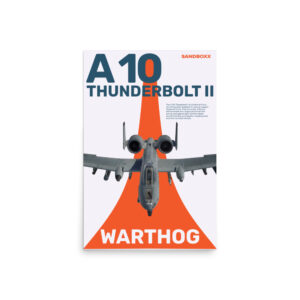
A-10 ‘Warthog’ Poster
$22.00 – $28.00 Select options This product has multiple variants. The options may be chosen on the product page -
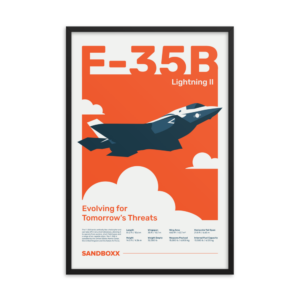
F-35 ‘Evolution’ Framed Poster
$45.00 – $111.00 Select options This product has multiple variants. The options may be chosen on the product page

Alex Hollings
Alex Hollings is a writer, dad, and Marine veteran.
Related to: Gear & Tech

How US Special Forces took on Wagner Group mercenaries in an intense 4-hour battle
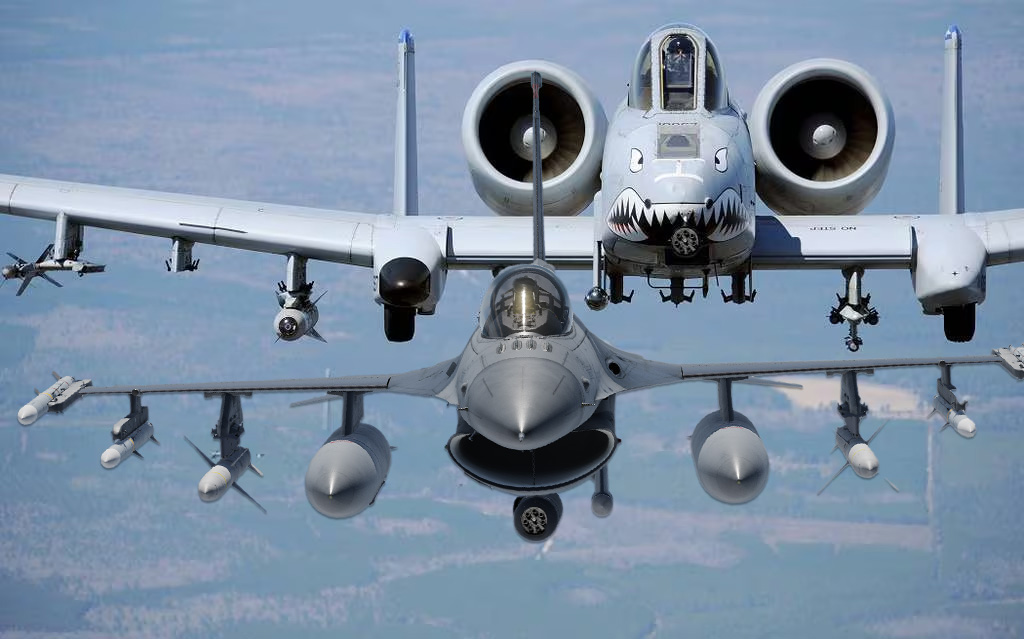
F-16s carrying the A-10’s 30mm cannon actually saw combat
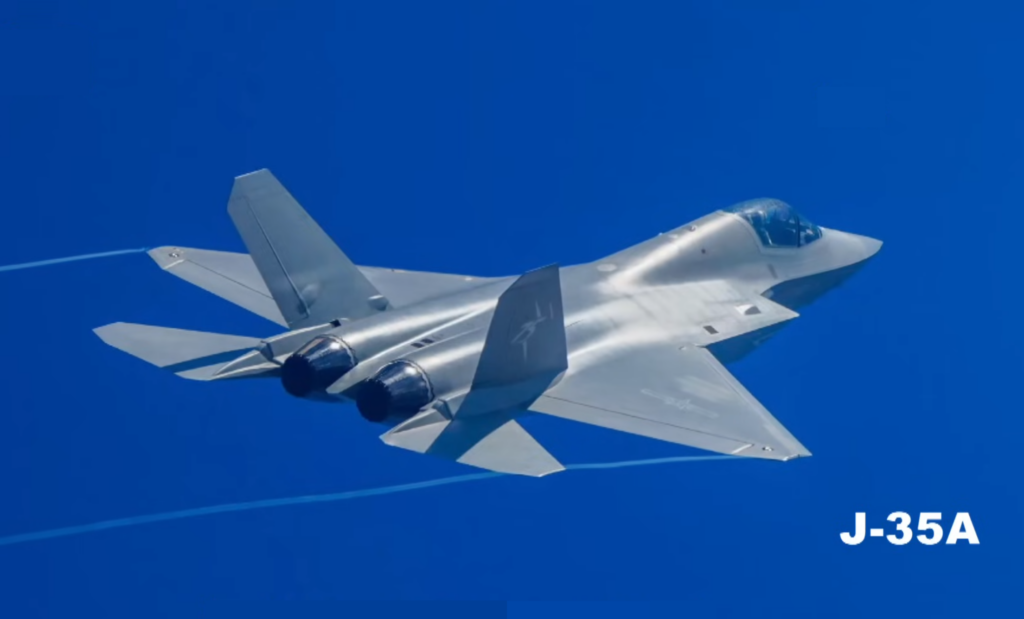
How does China’s new J-35 stealth fighter compare to America’s F-35?

Why China’s new J-35 jet could mean trouble for America
Sandboxx News
-

‘Sandboxx News’ Trucker Cap
$27.00 Select options This product has multiple variants. The options may be chosen on the product page -

‘AirPower’ Classic Hoodie
$46.00 – $48.00 Select options This product has multiple variants. The options may be chosen on the product page -

‘AirPower’ Golf Rope Hat
$31.00 Select options This product has multiple variants. The options may be chosen on the product page -

‘Sandboxx News’ Dad Hat
$27.00 Select options This product has multiple variants. The options may be chosen on the product page
